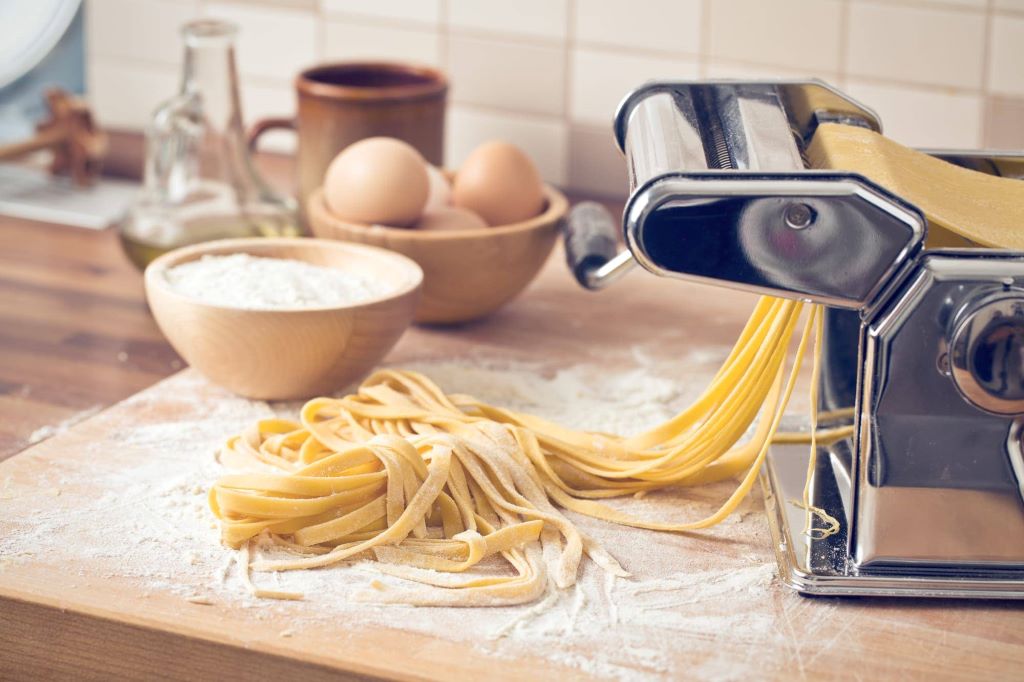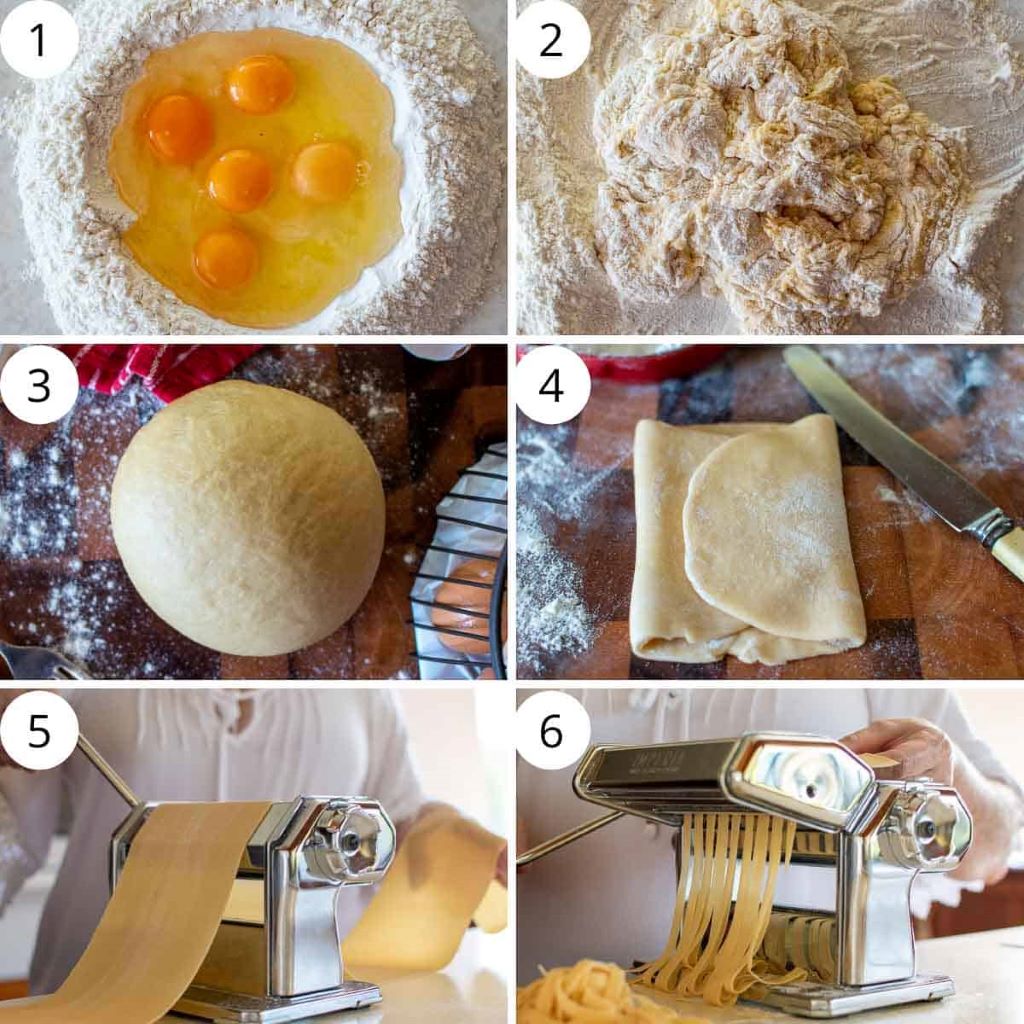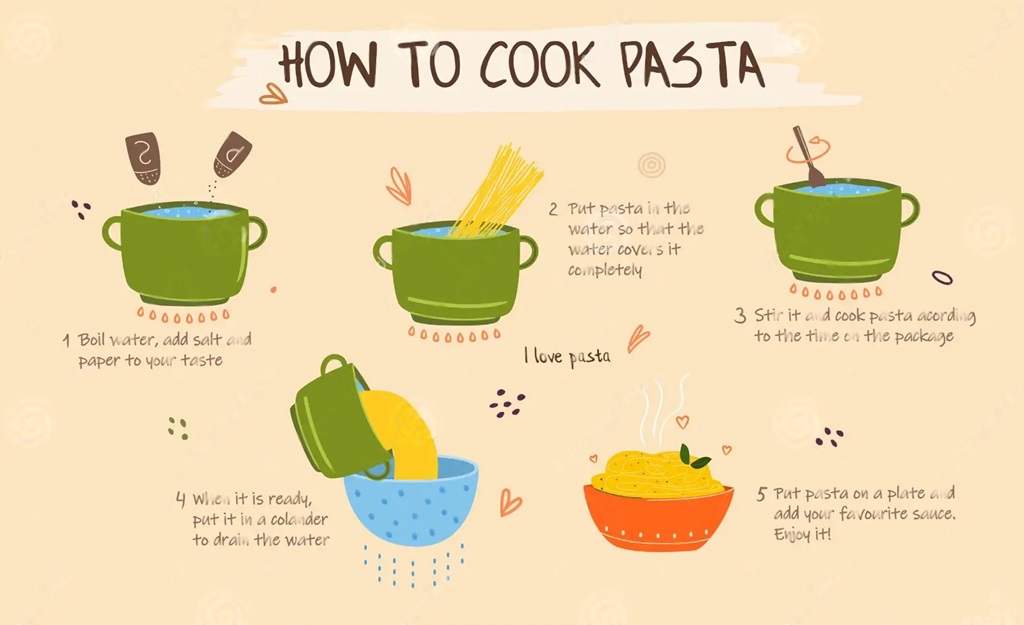How to Make Homemade Pasta Recipe?

As an Italian food lover, I’ve always been fascinated by the art of homemade pasta. There’s just something magical about taking simple ingredients like flour, eggs, and a bit of elbow grease and transforming them into delicate noodles and stuffed ravioli. Sure, it may seem intimidating, but homemade pasta is quite easy and rewarding to make. Once you get the basics down, you’ll be whipping up batches of fettuccine, ricotta-stuffed shells, and other pasta creations in no time.
In this guide, I’ll walk you through everything you need to know to make pasta completely from scratch right in your own kitchen.
Equipment and Ingredients for Homemade Pasta

Pasta making doesn’t require any specialized equipment. Here are the main items you’ll need:
Stand mixer or food processor – This makes mixing and kneading dough a breeze. If you don’t have either appliance, you can also mix and knead by hand.
Rolling pin – Essential for rolling out pasta dough into thin, even sheets. A long, wooden French-style rolling pin without handles works best.
Pasta machine – While not strictly necessary, a manual crank pasta machine makes rolling out dough super easy and fast. My favorite is the Marcato Atlas 150.
Knives – You’ll need a chef’s knife for cutting dough and a small paring knife for detailed work like stuffing ravioli.
Baking sheets – Use these to hold shaped pasta for drying before cooking. Line with parchment paper for easy cleanup.
Parchment paper – Helps prevent dough from sticking to work surfaces as you roll out.
The key ingredients in homemade pasta
- Flour – Use special “00” pasta flour, all-purpose flour, or a combo. See my flour recommendations below.
- Eggs – Whole eggs are the traditional pasta binder. For richer flavor and color, use egg yolks only.
- Water – Adds moisture to help bind the dough.
- Salt – Enhances flavor. Use fine sea salt or table salt.
- Optional extras – Spinach, mushrooms, herbs, etc to add color and flavor.
To make basic homemade pasta, you only need a few key ingredients. Flour is a crucial component, and choosing the right type can significantly impact the final product. For a delicate and tender texture, many pasta enthusiasts opt for “00” flour, a finely milled Italian flour. However, all-purpose flour works well too, providing a heartier bite.
Experiment with different flours to find your preferred balance of tenderness and chewiness. Now, if you’re ready to dive into a unique pasta creation, consider trying your hand at a Sacchetti pasta recipe. This delightful pasta variety, reminiscent of little “purses” filled with deliciousness, adds a touch of elegance to your homemade pasta repertoire.
Tips for Selecting Pasta Flour
The type of wheat flour you use can make a big difference in the texture and flavor of homemade pasta. Here are my top tips for selecting the perfect pasta flour:
Use “00” flour for silky pasta – This finely milled Italian flour makes pasta dough smooth, elastic, and easy to work with. It’s the gold standard for homemade pasta purists!
All-purpose flour works too – Much more accessible than “00”. A touch more coarse than “00” flour but still creates tender pasta.
Try a combo of flours – I like using half all-purpose and half “00” or semolina flour. Adds depth of flavor.
Semolina flour for texture – Made from durum wheat, semolina gives pasta a pleasantly chewy texture. Use up to 50%.
Whole wheat flour adds nutrition – Swap up to 1/4 of white flour for whole wheat to boost the nutrition of your pasta.
Add flavor with extras – Consider substituting up to 25% of the flour with ingredients like spinach, tomato powder, mushroom powder, etc.
Store flour properly – Keep flour in airtight containers away from heat and moisture to prevent it from going rancid.
Now that you know how to select the perfect pasta flour, let’s get mixing!

Step-By-Step Instructions for Making and Kneading Dough
Pasta dough comes together in two stages – mixing and kneading. Follow these steps:
Mixing the Dough
- Combine the flour and salt – Whisk together the flour(s) and salt in a mixing bowl. Create a well in the center.
- Add the eggs and water – Crack the eggs into the well and add a few tablespoons of water.
- Mix it up – Use a fork to lightly beat the eggs. Keep widening the well, gradually incorporating the flour until a shaggy dough forms.
- Let it rest – Once the dough starts coming together, cover it and let it rest for 30 minutes. This allows the flour to fully hydrate.
Kneading the Dough
- Knead the dough – On a clean surface, knead the dough for 10-15 minutes until smooth, elastic, and not sticky. Add sprinkles of flour as needed.
- Do the windowpane test – Grab a small piece of dough, gently stretch it thin. If you can see your fingers through it without tearing, it’s ready!
- Cover and rest – Form the dough into a ball, cover with plastic wrap or a towel and let it rest for 30-60 minutes before rolling.
And that’s it – you just made pasta dough from scratch! Now we can move onto the fun part: shaping the dough into noodles, filled pasta, and other creations.
Shaping Homemade Pasta Dough
The possibilities are endless when it comes to shaping pasta dough. Here are a few of my favorite homemade pasta shapes and how to form them:
Classic Pasta Noodles
Tagliatelle – Roll dough into thin sheets. Cut into long ribbons about 1/4 inch wide.
Fettuccine – Roll dough thinner than tagliatelle. Cut into ribbons about 1/8 inch wide.
Pappardelle – Roll dough slightly thicker. Cut into ribbons 3/4 to 1 inch wide.
Lasagna sheets – Roll dough very thin. Cut into rectangles roughly 5 by 7 inches.
Stuffed Pasta
Ravioli – Roll thin sheets. Place filling at intervals. Cover with another sheet. Cut into squares sealing filling inside.
Tortellini – Roll very thin sheets. Cut into circles. Place filling in center. Fold circle into a hat shape pressing edges to seal.
Cappelletti – Shape like tortellini but pinch edges together to form ruffled shape.
Agnolotti – Make half-moon shapes with filling inside the curved edge. Pinch to seal.
Shaped Pasta
Gnocchi – Roll dough into ropes. Cut into small pillow-like shapes. Press ridges into gnocchi using a fork.
Cavatelli – Roll dough into thin logs. Slice diagonally into short ribbon shapes. Press thumb into center to make an indentation.
Orecchiette – Cut dough into coin-size rounds. Press your thumb into the center to cup and form an “ear” shape.
Farfalle – Roll dough thin. Use a knife or fluted cutter to cut dough into rectangular shapes. Pinch in the center to bow.
Have fun coming up with your own pasta designs too. Get the whole family involved in shaping for a hands-on pasta experience!
Cooking Techniques for Homemade Pasta

Fresh pasta cooks very quickly – usually just 1 to 3 minutes once the water returns to a boil. Here are my tips for perfectly cooked homemade pasta:
- Use a large pot with lots of water – Pasta needs ample room to move around.
- Salt the cooking water well – It should taste almost like seawater. This adds flavor.
- Avoid overcrowding – Cook pasta in batches for even cooking.
- Stir at the start – Gently stir to prevent sticking those first 2 minutes.
- Test often – Homemade pasta cooks so fast! Fish out a piece to test.
- Reserve pasta water – Helps thin and emulsify pasta sauces.
- Don’t rinse pasta – Skip rinsing to allow pasta to absorb sauces.
- Use gentle heat – Quickly reheat leftover pasta over low heat with a splash of water.
Homemade pasta is also very versatile. It works well with all types of sauces from simple butter or olive oil to rich Bolognese. Just be sure not to overpower your tender homemade pasta with heavy sauces.
Storing and Freezing Homemade Pasta
Uncooked pasta dough can be refrigerated for a few days well wrapped in plastic but is best used immediately. Here are some tips for storing uncooked and cooked homemade pasta:
Store shaped uncooked pasta – Place floured shapes like gnocchi, ravioli, etc on a baking sheet lined with parchment paper. Freeze until solid then transfer to an airtight bag or container.
Freeze extra dough – Divide into portions, wrap tightly in plastic wrap, then place in freezer bags. Thaw overnight in the refrigerator before using.
Refrigerate cooked pasta – Portion pasta into serving size containers with a bit of oil or sauce to prevent sticking. Use within 3-5 days.
Freeze cooked pasta – Spread pasta out on a sheet pan to quickly cool before portioning into freezer bags or containers. Reheat gently with sauce.
With my homemade pasta recipes and techniques, you can whip up a batch of noodles, stuffed pasta, or shaped pasta in under an hour for a satisfying homemade meal. The flavors and textures of fresh pasta are truly unmatched. I hope this guide gives you the confidence to begin crafting your own pasta masterpieces right at home.
FAQs
What’s the difference between dried and fresh homemade pasta?
Dried pasta has been dehydrated, allowing it to be shelf-stable. Fresh pasta contains more moisture making the texture tender. Fresh needs to be cooked right away or frozen for later use.
Do I need a pasta machine to make homemade pasta?
You can definitely make pasta by hand but a pasta machine makes rolling dough out thinly much easier. I recommend investing in one if you plan to make pasta often.
What ingredients can I add to pasta dough for extra flavor?
Get creative with up to 25% of the flour! Spinach, roasted red peppers, sun-dried tomatoes, roasted garlic, and herbs are some of my favorites.
How thin should I roll pasta dough?
Thickness depends on the shape. Lasagna sheets should be paper thin. Ribbons for tagliatelle and fettuccine about 1/16 inch thick. Ravioli dough should be thin enough to see your hand through.
What gluten-free flours can I use to make homemade pasta?
A blend of finely milled brown rice flour, tapioca flour, and potato starch makes a great gluten-free pasta dough. Add xanthan gum for elasticity.
How do I fix pasta dough if it tears when rolling it out?
Tears mean the dough is either too dry or overworked. Just gather it together, knead briefly to smooth it out, cover, and let it rest for 30 minutes before trying again.
What sauce goes best with homemade pasta?
Simple sauces like olive oil, butter, basil pesto, light tomato sauce, or aglio e olio sauce really let you taste the flavor and texture of homemade pasta. Go rich with creamy vodka sauce or bolognese too.
Can I freeze uncooked pasta dough?
Yes, divide dough into portions and wrap tightly in plastic wrap before freezing. Thaw overnight in the fridge before rolling and shaping. The texture may be slightly less tender after freezing.
How long does fresh pasta last in the fridge?
Freshly made pasta will last 2-3 days in the fridge. Be sure to toss it with a little oil or sauce so it doesn’t dry out. Reheat gently before serving.
Conclusion
I hope this homemade pasta guide has shown you that crafting pasta from scratch is both achievable and fun right in your own kitchen. Don’t be intimidated by special equipment or complex shaping techniques. At its core, pasta only requires flour, eggs, elbow grease, and your imagination.
Start with a basic egg dough, then play around with specialty flours, herbs, vegetables, and different shapes. When exploring the best ways to save money on food, consider mastering the art of homemade pasta; not only does it allow you to control the ingredients, textures, and flavors, but once you’ve perfected the basics, you’ll be creating pasta masterpieces that not only impress any Italian grandma but also cater to your budget, leaving the whole family eager for seconds.
The sense of accomplishment from transforming simple ingredients into tender, flavorful pasta is so rewarding. Your homemade pasta is sure to be better than anything dried or store-bought. I hope this guide equips you with the knowledge to make pasta with confidence. Now it’s time to get mixing, rolling, shaping and saucing. Buon appetito!




